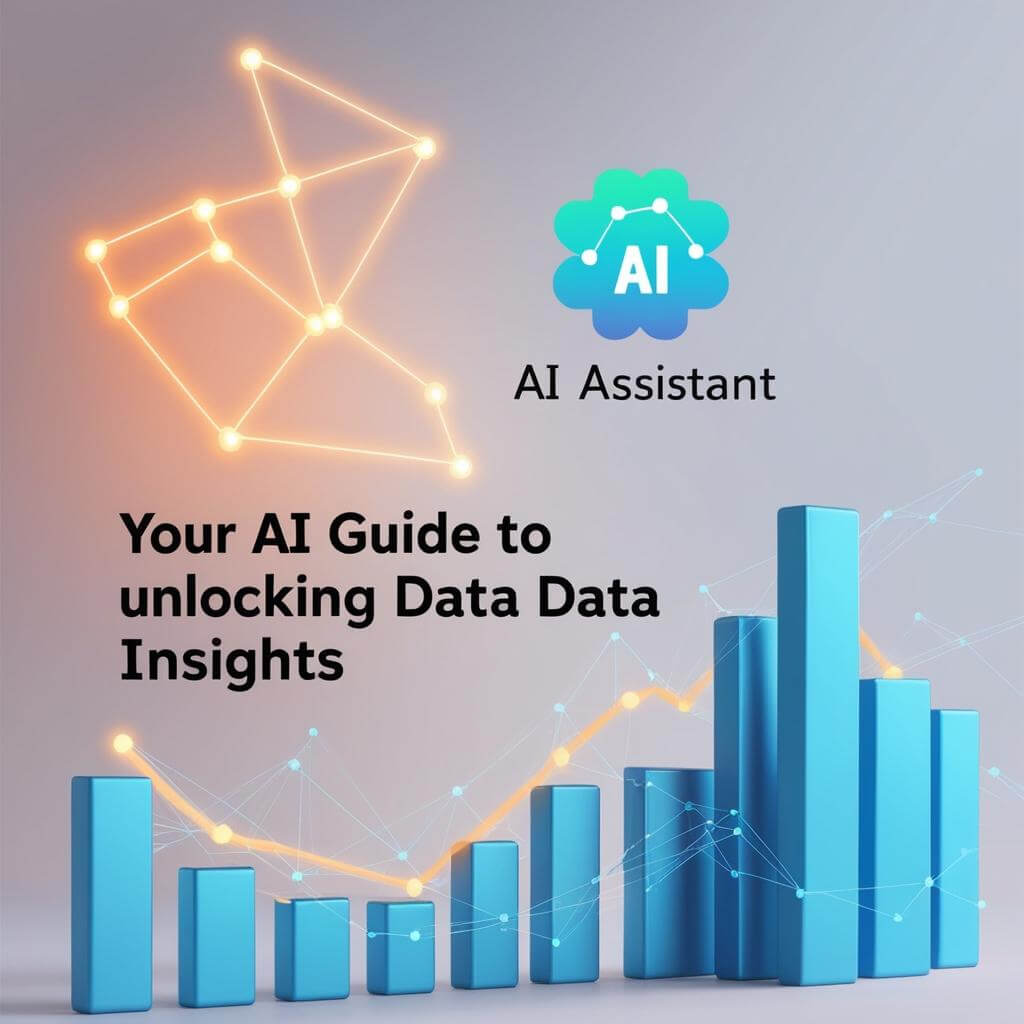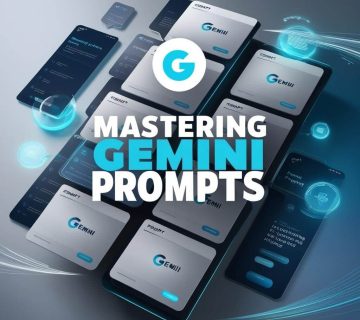In today’s data-driven world, the ability to understand and analyze information is more valuable than ever. From business and research to education, making sense of data can lead to smarter decisions and better outcomes. But what if you’re not a seasoned data scientist? Enter ChatGPT, your potential AI “data analyst” assistant. By learning how to prompt ChatGPT effectively, you can unlock powerful capabilities to explore, interpret, and draw insights from data, right from your keyboard.
This guide is for anyone in the US looking to leverage ChatGPT for data analysis tasks—whether you’re an educator sifting through student performance metrics, a small business owner tracking sales, or simply curious about the stories hidden within numbers.
What Does “Prompt ChatGPT Data Analyst” Actually Mean?
It’s not about ChatGPT magically becoming a human analyst. Instead, it means strategically instructing (or “prompting”) ChatGPT to perform specific tasks that a data analyst would typically handle. This can include:
- Data Cleaning and Preparation: Identifying inconsistencies or suggesting how to handle missing information.
- Exploratory Data Analysis (EDA): Helping you understand the basic features of your data through summaries and patterns.
- Data Interpretation: Translating complex data points into understandable language.
- Generating Visualisation Ideas: Suggesting appropriate charts or graphs to represent your data.
- Brainstorming Analytical Questions: Helping you think about what your data might be able to tell you.
Think of ChatGPT as an intelligent assistant that, with the right guidance, can significantly streamline your data exploration process.
Key Principles for Crafting Effective Data Analysis Prompts

The secret to successfully using ChatGPT as a data analyst lies in the prompts you provide. Here’s how to make them count:
- Provide Clear Context (Safely!):
- Describe your data structure: Explain the columns/variables, their types (e.g., numerical, categorical), and what they represent. Crucially, do NOT upload sensitive, private, or proprietary raw datasets into public versions of ChatGPT. Instead, describe the data or use anonymized sample snippets.
- Example: “I’m working with an anonymized dataset of student engagement. It has columns: ‘WeeklyLogins’ (number), ‘AssignmentsSubmitted’ (number), ‘ForumPosts’ (number), and ‘FinalGrade’ (percentage).”
- Clearly Define Your Goal:
- What specific question do you want to answer or what task do you want to perform?
- Example: “Based on the student engagement data described, what are three key questions I could investigate to understand the relationship between engagement metrics and final grades?” or “Suggest ways to identify students who might be at risk based on low ‘WeeklyLogins’ and ‘AssignmentsSubmitted’.”
- Specify Your Desired Output:
- Do you need a summary, a list of steps, suggestions for charts, or even example code (if you’re comfortable with it)?
- Example: “List five descriptive statistics I should calculate for the ‘FinalGrade’ column.” or “Provide a brief explanation in simple terms of what a positive correlation between ‘ForumPosts’ and ‘FinalGrade’ would imply.”
- Iterate and Refine:
- Your first prompt might not yield the perfect answer. Don’t be afraid to ask follow-up questions, provide more clarification, or ask ChatGPT to elaborate on its previous response.
Practical Examples: Prompting ChatGPT as Your Data Assistant
Let’s look at how you might prompt ChatGPT for common data analysis needs, with a lens towards educators or those new to deep data dives:
- Understanding Your Dataset:
- Prompt: “I have survey data from parents about school communication, with columns for ‘SatisfactionScore_Website’ (1-5), ‘SatisfactionScore_Newsletter’ (1-5), and ‘PreferredCommunicationMethod’ (categorical: Email, Phone, App). What are some initial analyses I could perform to understand overall satisfaction and preferences?”
- Getting Ideas for Data Cleaning:
- Prompt: “My dataset on student attendance has some cells with ‘N/A’ for ‘DaysAbsent’. What are common methods to handle these missing values if I want to calculate average attendance?”
- Generating Descriptive Statistics:
- Prompt: “For a dataset representing teacher experience in years (column: ‘YearsExperience’) and student performance scores on a standardized test (column: ‘TestScore_Avg’), request the mean, median, and standard deviation for both ‘YearsExperience’ and ‘TestScore_Avg’.”
- Brainstorming Data Visualizations:
- Prompt: “I want to show the trend of student enrollment in different after-school clubs over the past three years. What type of chart would be most effective for visualizing this, and what data points would I need?”
- Interpreting Basic Statistical Outputs (with caution):
- Prompt: “If a data analysis report states there’s a statistically significant difference (p < 0.05) in test scores between students who used a new learning app and those who didn’t, what does this generally mean in layman’s terms?” (Always remember AI gives general explanations; real interpretation needs context and expertise).
Critical Considerations for Using AI in Data Analysis:
While powerful, ChatGPT isn’t a substitute for human oversight:
- Data Privacy and Security are Non-Negotiable: Again, never upload sensitive or confidential raw data. Focus on using ChatGPT with descriptions of data, anonymized samples, or for learning analysis techniques conceptually.
- Verify and Validate: AI can make errors or “hallucinate” information. Always critically review any output. If possible, cross-reference with other tools or your own understanding.
- AI is an Assistant, Not the Expert: ChatGPT processes information based on patterns. It doesn’t truly “understand” the nuances or the real-world implications of your data without your domain expertise guiding it.
Simplify Your Data Dialogue: Curated Prompts for Educators and Beyond
Learning to craft precise, effective data analysis prompts takes time and practice. This is especially true when you’re trying to analyze specific types of data, like educational metrics, and need to ensure you’re asking the right questions in the right way.
That’s where our “Data Analysis ChatGPT and Gemini Prompts for Teachers”
https://digitalproductswall.com/product/data-analysis-chatgpt-and-gemini-prompts-for-teachers/
comes in. This digital product is specifically designed to provide educators (and anyone new to data analysis) with a set of structured, effective prompts for using AI tools like ChatGPT and Gemini.
This toolkit will help you:
- Quickly get started with analyzing common educational datasets (e.g., student performance, assessment results, engagement data).
- Ask targeted questions to uncover meaningful insights.
- Understand how to prompt for data cleaning ideas, descriptive statistics, visualization suggestions, and basic interpretation.
- Save valuable time and reduce the learning curve associated with AI-assisted data analysis.
- Use AI tools more confidently and ethically for data-informed decision-making.
Conclusion: Empower Your Data Journey with AI
The ability to “prompt ChatGPT data analyst” effectively opens up a new frontier for understanding information, even if you don’t have a Ph.D. in statistics. By combining the power of AI with your own critical thinking and domain knowledge—and always prioritizing data privacy—you can gain valuable insights that lead to better outcomes.
For US educators and professionals looking for a structured and efficient way to begin this journey, our “Data Analysis ChatGPT and Gemini Prompts for Teachers” offers a practical launchpad. Start transforming data from a challenge into an opportunity today.





No comment